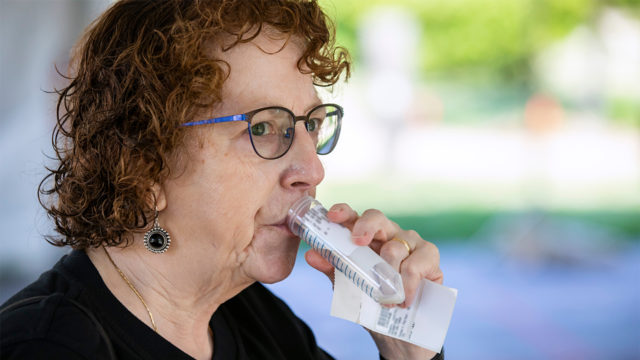In the ongoing battle against the COVID-19 pandemic, medical professionals and researchers have been striving to develop more efficient and accessible testing methods. One promising innovation that has emerged is the saliva-based COVID test. By harnessing the power of saliva, this test has the potential to break barriers and revolutionize the way we detect and manage COVID-19.
Table of Contents
A Non-Invasive Solution
One of the primary advantages of saliva-based COVID tests is their non-invasive nature. Unlike traditional nasopharyngeal swabs, which can cause discomfort and unease, saliva tests only require the collection of a small saliva sample. The sample is then put on a flow test’s test cassette where users can wait for the results. You can order lateral flow tests from reliable sources.
This makes the testing process more comfortable for individuals of all ages, including children and the elderly. Moreover, it reduces the risk of injury during sample collection and minimizes the need for trained medical professionals to administer the test.
Ease of Collection
Saliva tests offer unparalleled ease of collection. Individuals can collect their saliva samples easily and painlessly at home or in supervised testing centers. This self-collection aspect could be particularly advantageous in remote or underserved communities where access to healthcare facilities may be limited.
The simplification of the collection process also decreases the burden on healthcare systems, freeing up valuable resources for other critical tasks.
Faster Turnaround Time
Compared to some other testing methods, saliva-based COVID tests often provide faster turnaround times for results. Rapid detection of COVID-19 is crucial for controlling its spread, enabling timely isolation of infected individuals, and contact tracing. The quicker results from saliva tests can play a significant role in containing outbreaks and preventing further transmission of the virus.
Increased Accessibility
Saliva tests hold the potential to democratize COVID-19 testing by increasing accessibility. The ease of sample collection and reduced reliance on specialized equipment can potentially drive down costs, making testing more affordable and available to a broader population. This accessibility could be especially beneficial in low- and middle-income countries helping them to better control the spread or transmission of the virus and safeguard public health.
Promising Sensitivity and Specificity
Research has indicated that saliva-based COVID tests show promising sensitivity and specificity rates comparable to traditional swab tests. These tests can effectively detect the SARS-CoV-2 virus, even those who are asymptomatic.
This allows for early detection and timely intervention. As technology advances and further research is conducted, the accuracy of saliva tests is expected to improve, making them even more reliable in the fight against COVID-19.
Mitigating Transmission Risks
During the pandemic, healthcare workers have been at the forefront, risking their lives to conduct swab tests. Saliva-based tests present a game-changing solution, reducing the risk of virus transmission to frontline workers during sample collection. By minimizing contact with potentially infected individuals, these tests contribute to a safer testing environment for both the individuals being tested and the healthcare professionals.
Monitoring Long-Term Infections and Variants
As COVID-19 continues to evolve, monitoring long-term infections and emerging variants becomes essential. Saliva-based tests can be incorporated into longitudinal studies and surveillance efforts, aiding in understanding the dynamics of viral persistence and tracking the prevalence of different variants over time.
The Road Ahead
While saliva-based COVID tests show immense promise, ongoing research and development remain crucial to fully unlock their potential. Scientists and healthcare experts continue to refine the testing methods, improve accuracy, and explore new technologies to enhance the effectiveness of saliva tests further.
Conclusion
As we look ahead to the post-pandemic era, the widespread adoption of saliva-based COVID tests could prove instrumental in our ability to navigate public health challenges. The barriers broken by this innovative testing method have the potential to create a lasting impact on global health practices, enabling faster, more accessible, and reliable COVID-19 detection and management. Together, we can harness the power of saliva to forge a brighter and healthier future for all.








